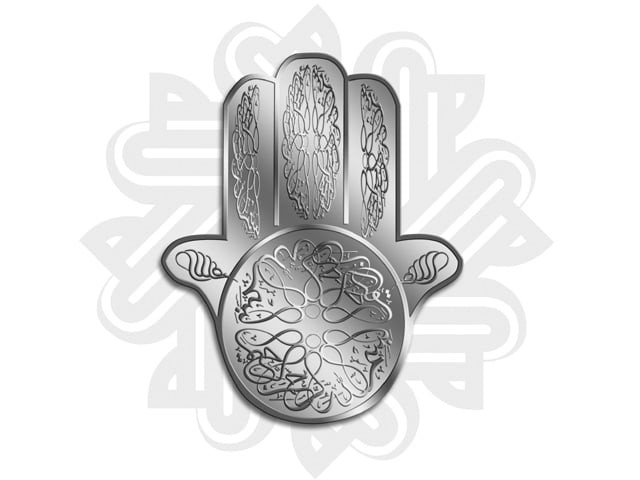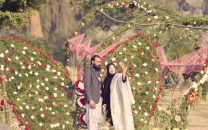Making symbols of reverence
In Muharram processions, the alam, the cradle, and the mehndi are used as symbols to show attachment.

Making symbols of reverence
64-year old Yaqoob has owned a shop named Bab-e-Ghaus Metal Craft for the last 35 years and has been an artisan himself for the last 40 years. He manufactures alam, zari which are replicas of Hazrat Imam Hussain (RA) shrine, the cradle of Ali Asghar (RA) and plaques bearing calligraphy in different patterns. Yaqoob learnt the art from different places including Srinagar and Muradabad in India and his three sons are also in the same field.
His son, Muhammad Imran, has been a metal craftsman for the last 15 years and says Muharram is the busiest month but this does not mean that they remain free during the year. “We keep working on different projects throughout the year. The largest zari that we have made so far took an entire year to complete. We made it nine years ago and it weighted 300 kilos. It was 12 feet in length and seven feet in width and was made of brass. It looked exactly like the original shrine and at that point in time it cost Rs0.4 million to manufacture but now it would cost around Rs 1.2 million,” he said.
Imran said a normal size zari takes about a month to complete but larger zaris take longer. “Clients give us orders and we keep working on them throughout the year. Our manufactured zaris and tazias go to Canada, Dubai, Afgha-nistan and England. Next year I am going to America to fix a zari over there,” he said.
Imran said that the majority of orders for alams come in before Muharram and a normal size alam can be completed in two days.
He said that customers give pictures of shrines or alams and they are made as per customers demands.
Talking about the process of manufacturing he said that it has three stages. “Chitai, Banai and Polis are three stages. In the first stage we make a sketch of the shrine or alam on a paper. Then we make its skeleton and later on embroidery is done on it and then in the final stage we polish it,” he said.
Yaqoob, one of the most senior metal artisans in Lahore, says that he is an expert in different styles of metal craft including Delhi artwork, Iranian artwork, Egyptian artwork and Kashmiri artwork. “A person can get the know-how of this work in two to three years but it can take 10 years for a person to become a skillful artisan,” he said. He says that this art transfers from one generation to the next, “My sons are in this profession and their sons will be into it. This is our reverence for this work.”
While people from all over the country come to Yaqoob for metal crafts he says Chinioti artisans are the best when it comes to pieces made from wood. “They make cradles, tazias, and zaris in wood and their skill is unmatched.”
Shia scholar Allama Sherazi said, “In Muharram processions, the alam of Ghazi Abbas (RA), the cradle of Ali Asghar (RA) and Shahzada Qasim’s (RA) mehndi are used as symbols to show the attachment to these great personalities and the household (Ahl-e-Baet) of Prophet Muhammad (pbuh).”
Tajamul Abbas, a devotee, said, “Everyone has to die, but the way the martyrs of Karbala sacrificed their lives have made them immortal. The people will keep adoring symbols associated with them till the end of the world.”
Published in The Express Tribune, December 17th, 2010.



















COMMENTS
Comments are moderated and generally will be posted if they are on-topic and not abusive.
For more information, please see our Comments FAQ